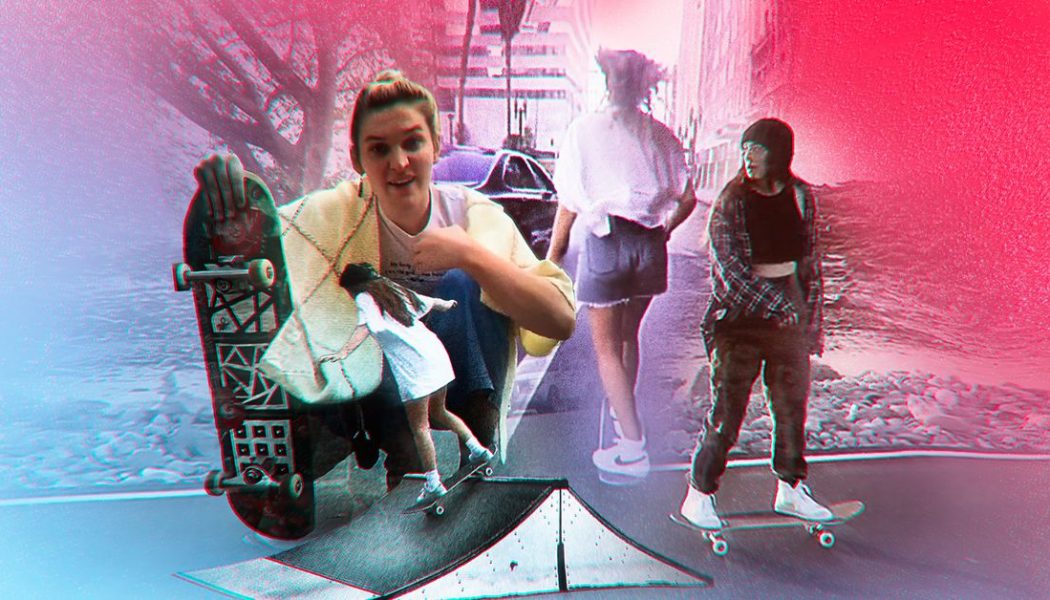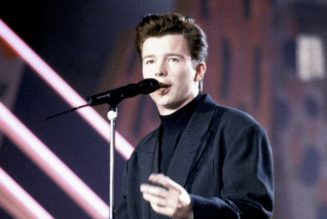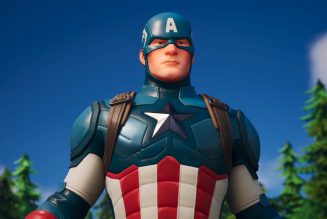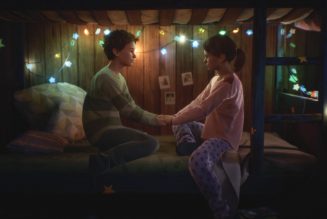
Courtney Atencio rides low to the ground, swerving in and out of long, empty California streets. In one video, she grabs the back of a Toyota Camry and cruises along behind it. In another, she’s with her pals, practicing tricks at a local skate park. Every time, Atencio’s clips are undeniably cool, and they quickly become flooded with comments from fans asking for tips on how to start skating. Atencio didn’t start skating or her TikTok account to achieve fame, but she quickly found communities in both that she never experienced when she was growing up.
“When I was 14, guys would make fun of me for trying to go to the skate park because I’m the only female there,” Atencio told The Verge. “Having TikTok, to be able to show girls that you’re not alone, you can still skate, you don’t even listen to all those guys, is so important.”
Skate culture has found a new life on TikTok, where short videos of impressive tricks, painful wipeouts, and hangs at the local skatepark have collectively brought in billions of views. The explosion in skateboarding videos has encouraged one-time skaters to pick up the hobby again and convinced complete newbies to try it for the first time — and unlike the male-dominated world that was the face of skate culture for decades, many of TikTok’s stars are women and queer folks.
Hashtags like #girlswhoskate and #skatergirl are constantly growing, creating a never-ending sea of videos starring girls and women. Swipe around, and you’ll find skaters like Brianna King, an incredibly popular creator known for offering tips that newcomers can use when starting out, or skateboobs, an all-girl skateboard group in Scotland, which regularly post videos of their time skating. But many creators are more like Atencio, who simply posts videos of solo rides through her home in suburban Los Angeles or her time spent hanging out at skateparks with friends.
“I see a lot more women skateboarding on TikTok than I ever did growing up,” Faeth Perryman, who also posts skate videos to TikTok, told The Verge. “I don’t really know if that’s because there a lot of girls on TikTok in general, or if TikTok just made skateboarding videos more accessible.”
Thanks to TikTok’s recommendation algorithm, more than 250,000 people watched a video of Perryman skateboarding down an empty road in Acadia, Maine, the Atlantic Ocean spanning for miles behind her as the sun rises. The app constantly serves up new videos to people who engage with similar types of content. Basically, if you like, comment, or share a couple of skateboarding videos, TikTok will fill your feed with more and more.
After waning in the late ‘00s and beyond, skate culture had a resurgence over the last few years. The success of streetwear brands like Supreme that lean heavily on skateboarding aesthetics helped drive new interest in boarding, the pandemic gave people more time to finally try their hands at it, and a remaster of the first two Tony Hawk’s Pro Skater games offered up even more nostalgia. Skateboarding was even about to have its Olympic debut this year until the games got canceled.
It’s not like women and trans skaters weren’t around in the last half-century, but it was men who dominated the covers of Thrasher Magazine, men who starred in the coveted VHS compilations that would get passed around skate shops, and men who made up nearly all of the featured skaters in the hugely popular Tony Hawk games. TikTok has helped skaters with less visibility find more inclusive communities.
Perryman grew up around skateboarding — her brothers and dad all skated — but she still felt intimidated by the male-dominated culture. On TikTok, she found herself with a new platform and a group of young girls who wanted to emulate her style. Atencio, who has 76,000 followers, says she’s constantly surprised by the number of young girls who reach out to her asking about what size board they should get.
C, a trans nonbinary artist, said they were inspired by the trans skaters who popped up on the app’s main feed, and thought, “I might be able to do that myself.” While C grew up skateboarding, they fell out of it as an adult. It wasn’t until the pandemic hit, and C found more time to pick up old hobbies, that they jumped back into it.
“Skating is such a punk, anti-society thing, and in my opinion, so is being trans and existing specifically outside of the binary,” C told The Verge. “Seeing those two things happen on TikTok was so beautiful.”
Problems that existed in skate culture for years are present on TikTok, too. Men show up in comments calling girls posers and commenting negatively on the way women skate. Perryman tries not to pay attention to the comments, but Atencio argues the positive comments she receives outweigh the negative ones.
“For every negative comment there’s going to be like 20x more complimentary comments where people are pushing me and saying good job,” Atencio said.
But creators like Atencio and Perryman want to encourage people to get off TikTok and actually try skateboarding. Skateboarding to Perryman and Atencio is about getting on a board and meeting others just as much as it is watching people. It’s Atencio’s closest friends — the ones she found at skateparks, she says — who pushed her “to do what I do on TikTok.”









